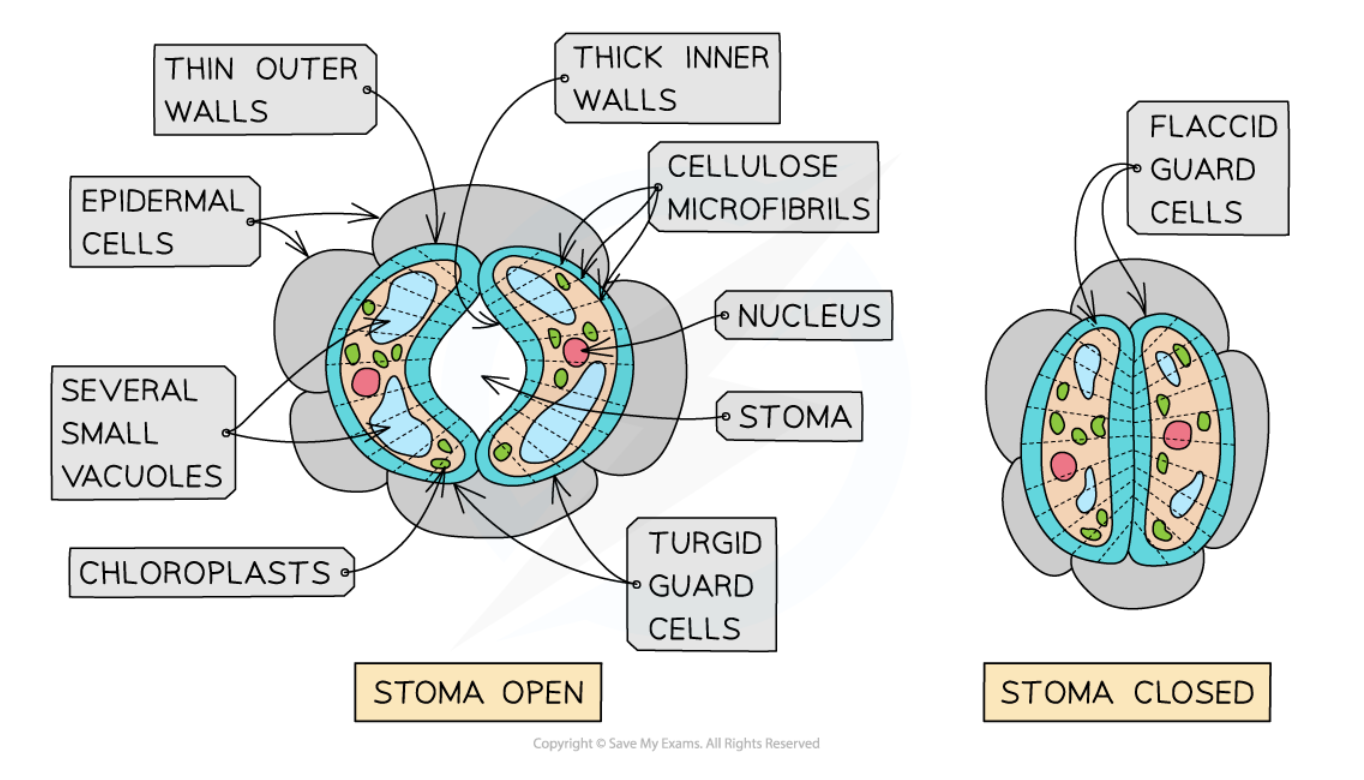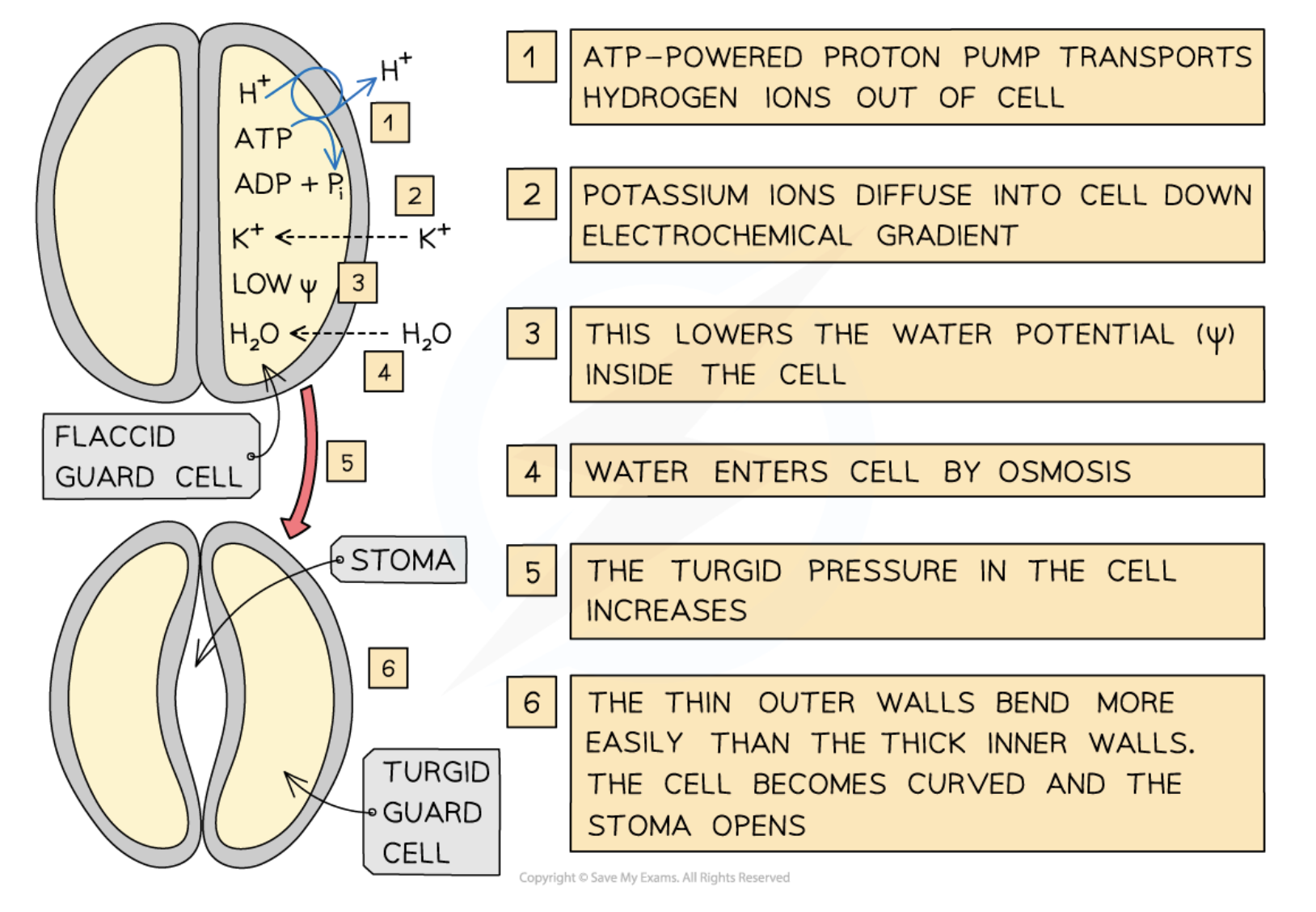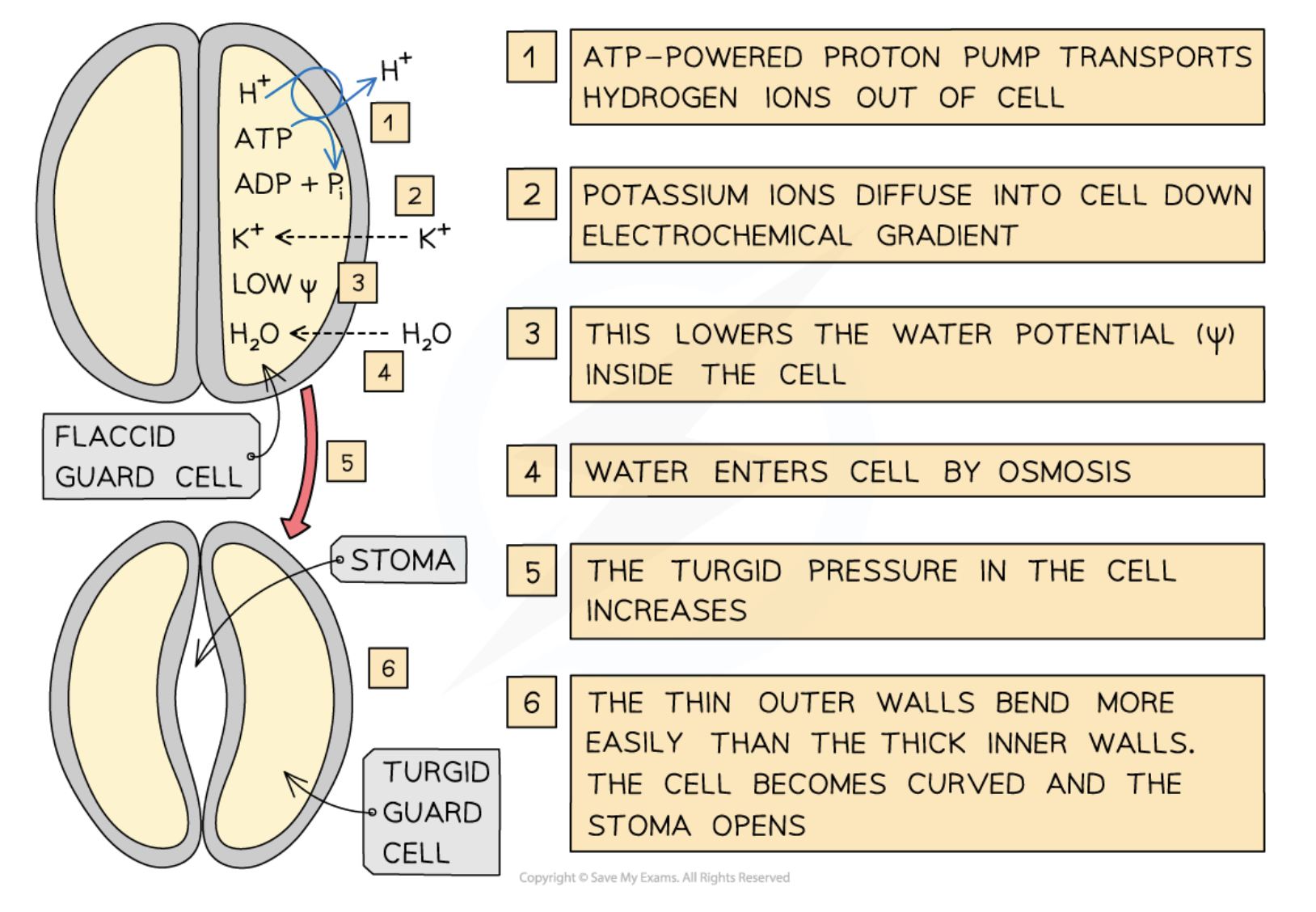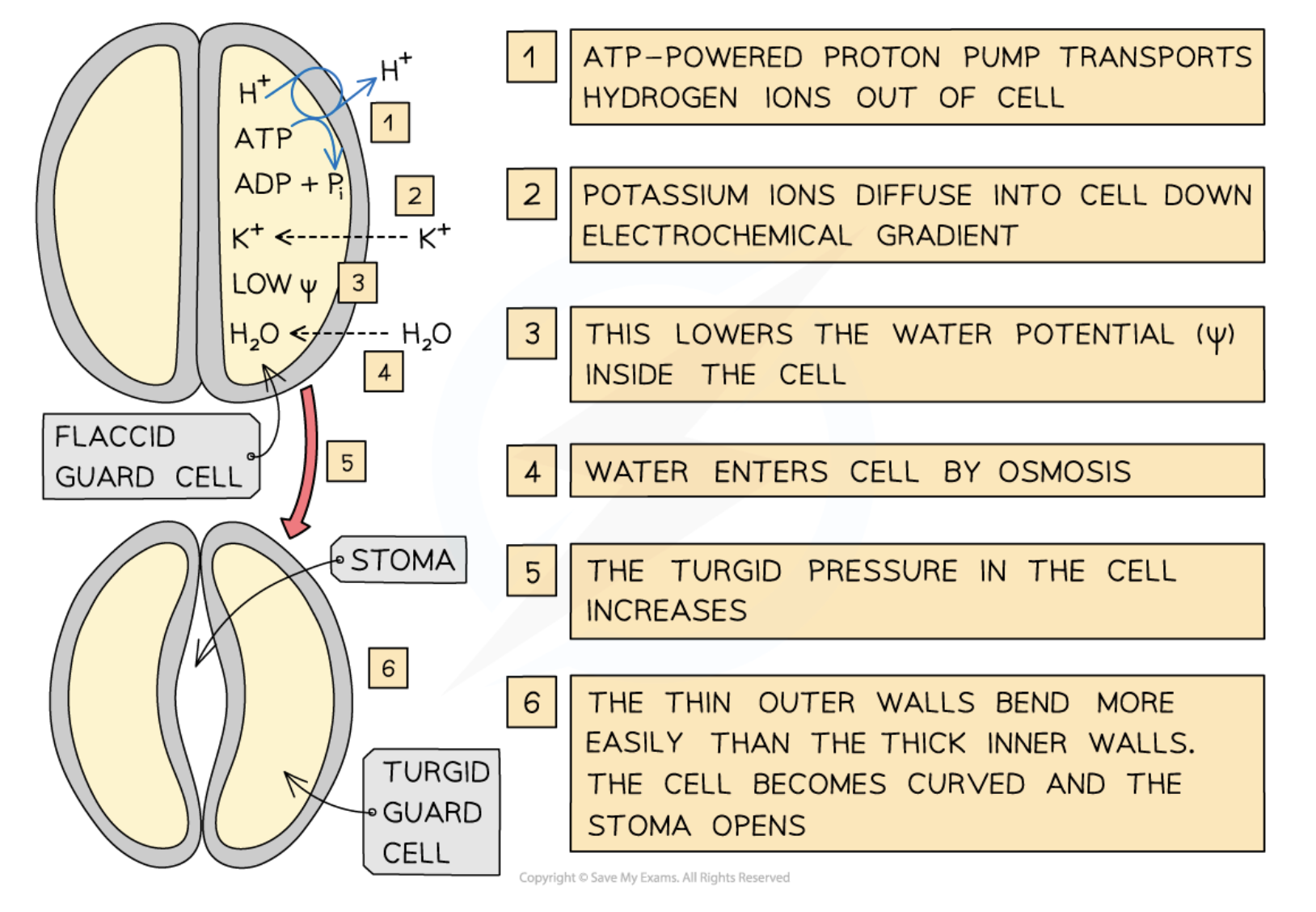(CIE A2 Biology) Guard cells + stomatal openings/closures
1/5
There's no tags or description
Looks like no tags are added yet.
Name | Mastery | Learn | Test | Matching | Spaced |
|---|
No study sessions yet.
6 Terms
the main features of guard cells
thicker stoma-facing cell walls + thinner adjacent epidermal cell-facing cell walls that’re plasmodesmata-free
cellulose microfibrils arranged around the cells in bands
folded plasma membranes w/ lots of channel/carrier proteins
high-chloroplast/mitochondria-density cytoplasm
lots of small vacuoles w/ fewer-grana thylakoids
lots of cristae in the mitochondria

what happens when the guard cells become turgid
they open the stomata up
how ATP-powered proton pumps respond to increased light intensity
by actively transporting H+ ions out of guard cells to make their insides more negatively charged than their outsides

what happens after the guard cells’ insides become more negatively charged than the outsides
K+ channels in the guard cells’ plasma membranes open leading to K+ ions diffusing down an electrochemical gradient into these guard cells

what happens after K+ ions’ diffusion into these guard cells
the resulting lower water potential leads to water diffusing through the guard cells’ aquaporins by osmosis (mostly entering the vacuoles thus leading to increased turgor pressure that opens the stomata up)

what happens when the guard cells become flaccid
they shut the stomata up (in fact during stomatal closures everything happens opposite to what happens during stomatal apertures like reversed water potential gradients)